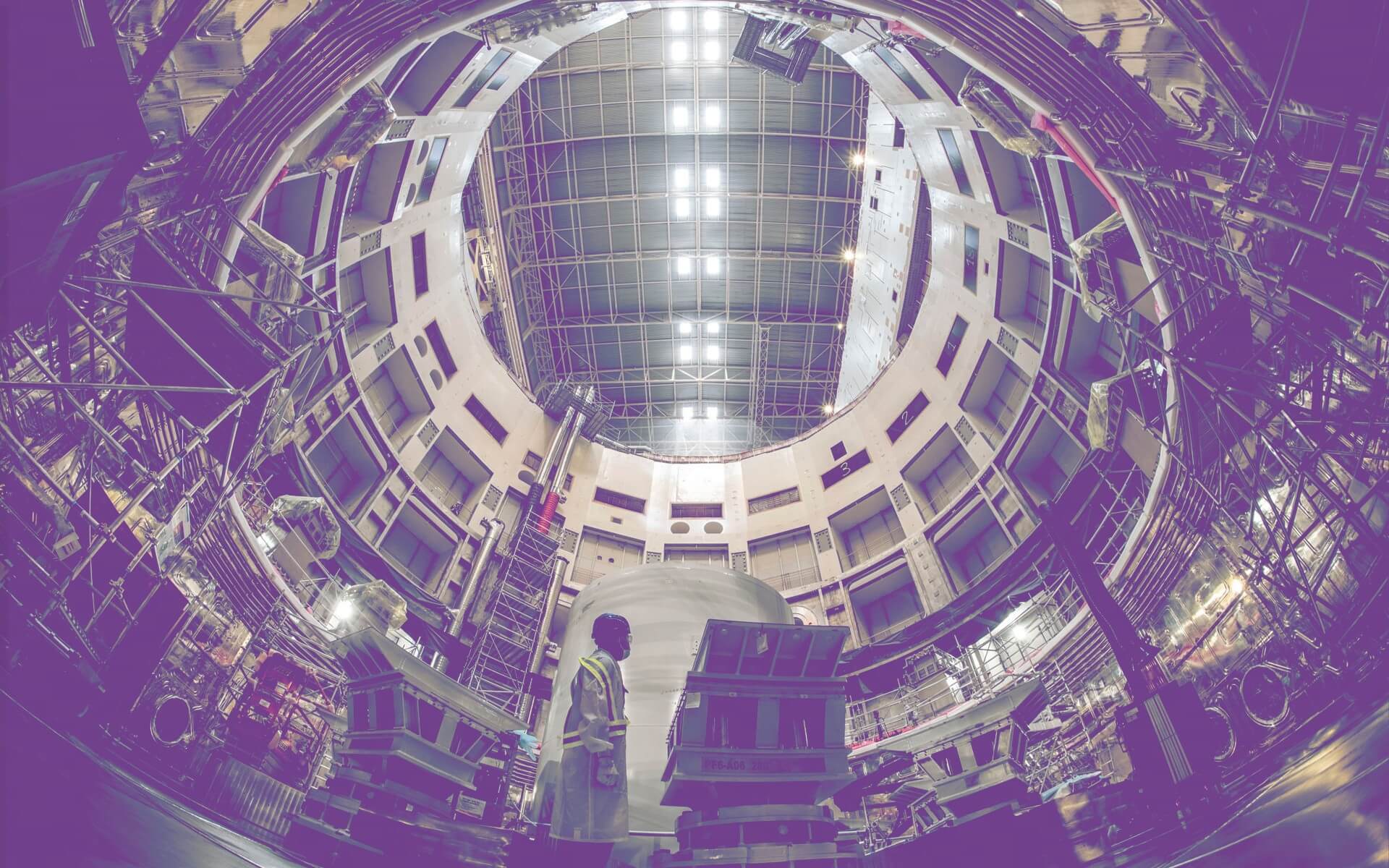Nuclear, simulation and innovation, three words that have formed part of Tecnatom’ DNA since its beginnings.
So, when we heard in 2016 that the ITER Organization wanted to develop the first of kindplant simulator for the nuclear fusion, it was clear to us that we wanted to participate in this opportunity.
The ITER project is one of the world’s largest investment projects, involving more than 35 countries, with the aim of demonstrating the viability of nuclear fusion as an inexhaustible energy source. To this end, one of the world’s largest magnetic confinement fusion devices is being built, in which integrated technologies, materials and physical regimes necessary for fusion-based electricity production will be tested.

Its operation will be carried out from the ITER control room, and its operators must be trained to be prepared to face major risks. For this reason, it is necessary to have an operator training simulator, in the same way as is done in nuclear power plants.
Our first steps in the project started in Cadarache in April 2016, participating in the technical sessions that would lead to defining the scope of the ITER control room simulator.
The technical requirements were highly complex. The Tecnatom technicians played a decisive role, first in understanding the requirements, many of them new to us, and finally in drawing up the technical bid and making an assessment of the costs.
But it was not until August 2020 that the arduous three-phase bidding process began. The first was to show interest in participating in the project, the second was the pre-qualification phase, and the final phase was to prepare the bid.
In the end, we were awarded the project ahead of six other world-renowned companies.
The part of the ITER project that Tecnatom is to develop consists of the creation of the simulator platform of what will be the ITER operator training simulator, the integration of existing models developed by different suppliers, the integration of the control systems, the development of additional models, maintenance and training on the platform.

For the integration of the control systems, Tecnatom will rely on its partner Cosylab, a Slovenian company expert in this type of control.
The project, which has already begun, will have an initial duration of four years, although it is intended to be a project in which we will carry out activities throughout the life of the ITER project.
Congratulations to all the team involved in securing this opportunity and to those who will be part of the project!
It is undoubtedly one of the most promising, innovative and challenging projects for the future of the nuclear industry.
Author: Ana Izquierdo.






